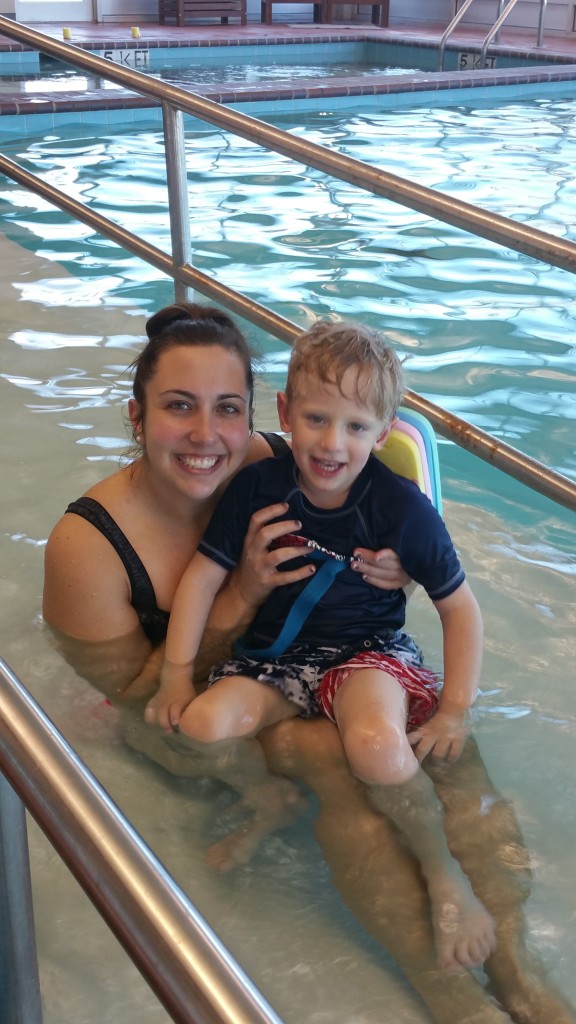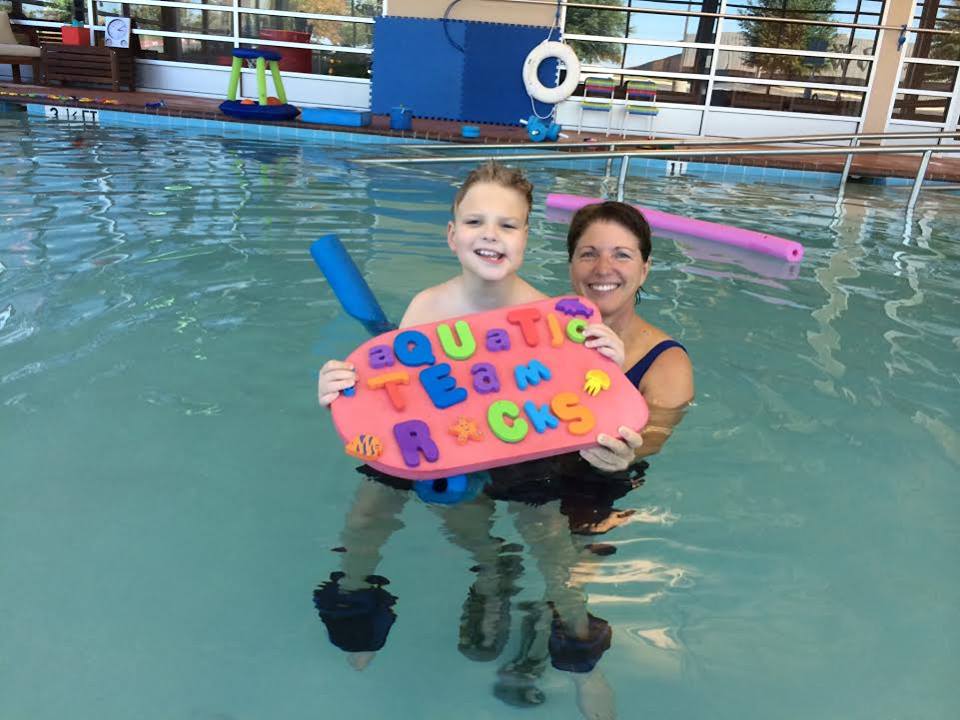When people ask me if speech therapy can be done in the water, my answer is an enthusiastic YES! For children with special needs, being in the water provides an environment with unique advantages over treatment exclusively on land. Many people are familiar with use of pool settings for physical and occupational therapy; however, some are surprised to learn about the many benefits of a water-based speech therapy setting for enhancing speech-language development.
#1 Warm Water Relaxation promotes Spee ch
ch
The pools at Children’s Therapy TEAM were specifically designed for therapeutic purposes. The water temperatures range from 90°-92° year-round. Warm water naturally provides relaxation, which in turn facilitates speech production. Water provides a gentle environment to target the respiration and phonation required for speech production.
#2 Strengthening muscles used in speech production
The hydrostatic pressure of water at chest-deep level provides resistance to strengthen the diaphragm, a major muscle involved in breathing for speech. Water is able to give more support to the trunk, head, and neck, thus offering better positioning for the jaw and tongue. This promotes improved feeding skills and facilitates more intelligible articulation. Speech therapists who regularly work in water report improved coordination for louder volume and sustained voicing.
#3 A Natural setting for Oral-Motor Treatment
In my own clinical experience, about half of children receiving oral-motor treatment tend to be defensive. Their uneasiness is understandable. The Speech-Language Pathologist must don gloves, and actively touch the child’s tongue, cheeks and jaw areas to help them develop awareness, strength, and mobility of the oral muscles. However, in the water, a child’s defensiveness to this treatment is significantly reduced. The warm water relaxes them, and the therapist does not have to wear gloves because the water is safely treated and sanitized.
#4 Better Focus and Optimized Learning
The warm water in the pool tends to decrease a child’s tactile defensiveness. This helps them to focus their attention on other things like vocal and verbal imitation and production. The environment is also very motivating and reinforcing for developing language and cognitive skills. As children are engaged and attending to tasks for longer periods of time, they get closer to reaching their optimal learning potential.
#5 A Routine for Communication
Visual schedules and the Picture Exchange Communication System can easily be built into aquatic therapy sessions. Children can have more control over their own sessions with picture choices. Numerous opportunities for requesting and commenting can be provided in the water and during the child’s routine before they even get into the water. Sequencing the steps for dressing/un-dressing before pool time provides an authentic opportunity for communication. Vocabulary pertaining to these routines, as well as water activities in the pool, can easily be incorporated to target a child’s therapy goals.
#6 Opportunities for Fun and Socialization 
Aquatic therapy provides a natural environment for singing songs, playing games, and group play with emphasis on initiation and turn taking. It provides a perfect opportunity to develop social skills with peers and therapists in a setting that is relaxing and fun.
Written by Carmen Shumpert, Children’s Therapy TEAM Speech-Language Pathologist
Sources:
Blum, Haley. (2015) Water Works. The ASHA Leader. American Speech-Language Hearing Association. Vol. 20, 26-27. Dickinson, Kathleen. Aquatic Therapy University Lecture Notes. (December 4-5, 2015) Evidence-Based Aquatic Therapy for the Pediatric Patient. Children’s Therapy TEAM Aquatic Center, Bentonville, AR.
Iskowitz, Mark. (1998) Aquatic Therapy: Pursuing Speech Therapy Goals in the Pool. Advance Healthcare Network for Speech and Hearing. Retrieved from http://speech-language-pathology-audiology.advanceweb.com/
